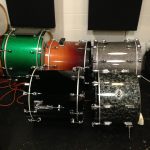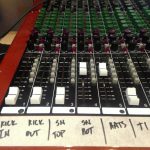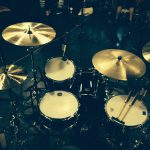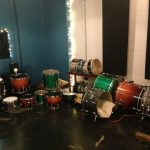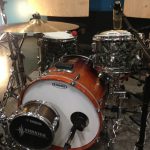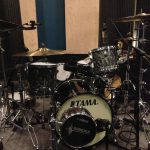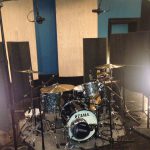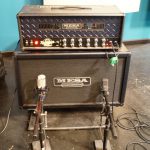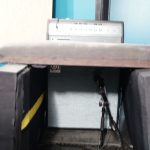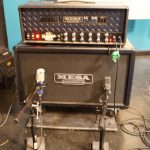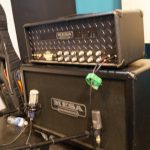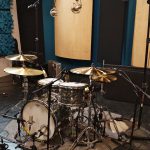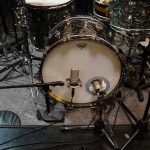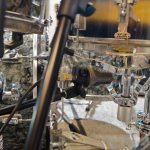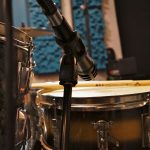If there is one simple thing you can do to make your recordings better, it’s checking your phase relationships between each of your microphones!
It seems like such a simple task yet I hear recording after recording that has obvious phase issues. On drums maybe it’s the overheads are out of phase, or the outside kick mic, or it could be a multitude of problems with a multiple mic setup. With guitars phase issues usually occur when using 2 mics that aren’t lined up properly (I’m not talking about a phase pedal or effect).
Phase cancellation. happens when one sound hits two mics at different times. When you are likely to get some degree of phase cancellation. Meaning the source will lack body and sound thin. It will also be somewhat quieter. Guitar players that have used phase pedals are familiar with this. When used correctly it can be a very cool effect but that’s not what we’re talking about here.
On drums phase issues will absolutely ruin your tone. Kick drums will lack punch and bottom end, snares will sound thin, and cymbals can sound harsh….and no amount of eq will fix it. Fortunately it’s easy to check if you know what to listen for.
Phase kills tone fast and for some reason I’m hearing this issue a lot lately. I’ve come to think, that for some reason, a lot of people must not know what to listen for so I decided to tackle this subject in a recent Recording Ninja Workshop Live Broadcast Seminar. We setup a simple drum kit and simple guitar setup to demonstrate the effect of phase relationships between multiple mics and how, if left unchecked, they can destroy your tone.
For an excellent, detailed, explanation of phase check out this article from Sound On Sound.
I’ve pulled two different clips from the “It’s All About Phase” Live Broadcast. One focusing on drums and one focusing on guitars. These two videos should help show you what to listen for when checking for phase issues during your next recording.
Happy, phase correct, recording!
Charlie








